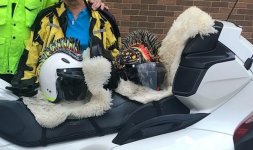+1 on the Air Hawk. We have been using them for years on our rides, from way before Roho sold the company off. We work with wheelchairs, seating, positioning, and wound care. The Roho, which is what the Air Hawk is based on, is supposed to reduce pressure to the bony prominences (sit bones) by spreading (distributing) the pressure by means of immersions, reduce shearing forces as the cells move with you and allow for air circulation between the cells.
I have used a pressure mapping system with and without the Air Hawk, the difference is significant, the key is proper inflation. You want just enough air in the cushion to prevent bottoming out, this will vary on your build/frame type. A really good starting point is to slightly over inflate the cushion, then open the valve with the cushion on a flat surface and no rider or pressure on it, let it equalize and close the valve. Because there isn't a whole lot of air in the cushion, very small changes in volume make a big difference.
You should be able to rock slightly to the left and right and feel your IT's (sit bones) just start to bottom out, you can even use you hand to gauge the distance, it should be about the thickness of your finger between the seat and your IT's. FYI Temperature and altitude do affect the pressure.
I hope this helps,
Ken

